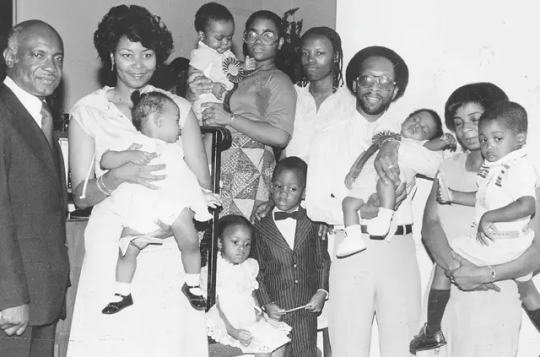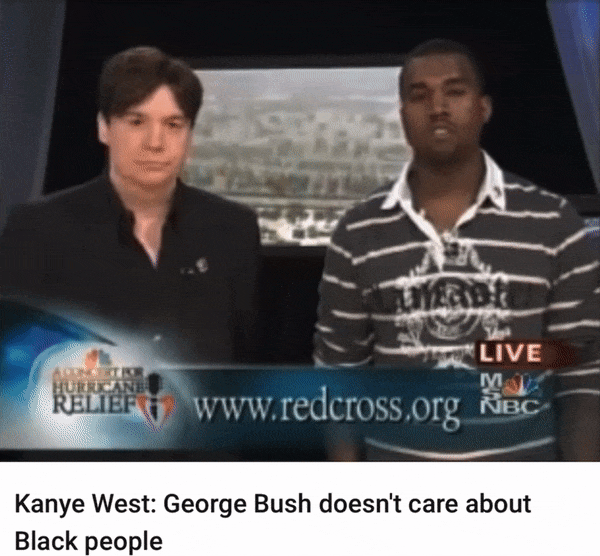#affirmation nation
Explore tagged Tumblr posts
Photo

Embrace the healing power of your body with this positive affirmation
#health affirmations#affirmation#positive affirmations for health care workers#positive affirmations for health and healing#positive affirmations for health anxiety#positive affirmations for health#affirmations for health and healing#law of attraction affirmations for health#affirmations for health#affirmation nation#self growth#Positive affirmations for self-esteem#Affirmations for confidence#Affirmations for confidence building#daily affirmations for success#positive affirmations for success#affirmations for success#affirmation for success#Affirmations for a healthy mindset#Affirmations for stress relief#Affirmations for weight loss#daily affirmations for happiness#positive affirmations for happiness and success#powerful affirmations for happiness#positive affirmations for happiness#affirmations for happiness#Affirmations for overcoming anxiety#affirmations for abundance#What Are The Benefits Of Using Positive Affirmations for Gratitude?#affirmations for gratitude and abundance
79 notes
·
View notes
Text
Haha I’m soooooo normal
0 notes
Text
Stop Manifesting So Desperatly!
Manifesting insecurely? WHat should you do? Affirmations? Imaginal scnes? No! STOP being insecure and remember that YOU are manifesing YOU first, not them. If you see this from a religious standpoint you are currently “having another God beside God.” You have to remember what comes fist when you manifest. Desparate for an sp? To me, this is an addiction. People manifesting their sp is…

View On WordPress
#abundance mindset#achieve your dreams#Affirmation Nation#affirmations#Awaken Your Mind#Belief In Magic#Believe in yourself#Courage To Change#create your reality#Dream Achiever#Dream Believe Achieve#Dream Big#Dream Chaser#dream life#Empower Yourself#Empowered Living#empowerment#Empowerment Quotes#goal setting#gratitude#Growth Mindset#Happiness#Healing Journey#Healthy Mind#Higher Self#Inner Balance#Inner Peace#Inner Strength#Inspiration#Inspiring Minds
0 notes
Text




Behold his glory
Daily Affirmations:
Cosmic Machine Herald is the most beautiful being
Cosmic Machine Herald is exempt from wrongdoing
Cosmic Machine Herald will free us from suffering
Cosmic Machine Herald will save us from ourselves
My soul belongs to Cosmic Machine Herald
#cosmic machine herald#my love my light the messiah our savior#Viktor arcane#viktor#not gonna tag machine herald bc I like to keep that just for League Viktor#daily affirmations#Viktor nation#arcane#arcane screenshots#arcane screencaps#arcane season 2#arcane spoilers#arcane viktor#citrus post
165 notes
·
View notes
Text
A Plains Cree physician who practices family medicine in Alberta says it’s shameful that Conservative Premier Danielle Smith is playing politics with transgender issues.
“It’s really important to know that people don’t do this [gender affirmation] lightly,” said Dr. James Makokis, who identifies as Two-Spirit and works directly with trans patients. “It is something that they’ve known their entire life.
“And clinicians do thorough assessments of ensuring that people when they say they’re trans, they’re trans and we just ensure that there’s not medical contra-indications to doing so and there is a thorough assessment process of that.”
On Wednesday, Smith announced a number of policy changes on social media that will restrict medical access to those seeking gender affirmation therapy – especially transgender youth.
Full article
Tagging: @politicsofcanada
#cdnpoli#canada#canadian politics#canadian news#canadian#alberta#james makokis#plains cree#saddle lake cree nation#danielle smith#conservatives#UCP#united conservative party#transphobia#trans rights#trans youth#transphobia tw#gender affirming care#gender affirming healthcare
461 notes
·
View notes
Text
Lil Kalish at HuffPost:
The U.S. Supreme Court on Wednesday will hear arguments for the most important transgender rights case it has ever reviewed — one that could have significant consequences on the future of lifesaving gender-affirming care for youth in the country. At the heart of the case, United States v. Skrmetti, is the question of whether a Tennessee ban on such care violates the 14th Amendment’s equal protection clause, which bars discrimination on the basis of sex. The Tennessee law, Senate Bill 1, encourages minors to “appreciate their sex” by prohibiting puberty blockers or hormone replacement therapy for the purposes of allowing young people to live as an “identity inconsistent with the minor’s sex.”
The Department of Justice, Lambda Legal and the American Civil Liberties Union, who petitioned the Supreme Court to hear the case, have argued that Tennessee’s law amounts to sex discrimination because it specifically bars transgender youth from these medications while allowing cisgender youth to undergo the same treatments for other conditions, such as early puberty. “This case contains some of the worst leaning into sex stereotypes that I’ve ever seen in a statute,” said Sasha Buchert, the director of the nonbinary and transgender rights project at Lambda Legal, the oldest LGBTQ+ law firm in the U.S. “It’s clearly a sex-based consideration because this is the same care that [they’re] just banning for trans people. But even further, there is this gender conformity aspect to the statute, which I think is implicit in all of these bans that we’ve seen. It’s just that Tennessee didn’t want to hide it.”
Tennessee has argued that the law does not specifically target trans people, although the state acknowledges that the ban sets “age- and use-based limits” on puberty blockers, hormones and surgeries for the “purpose of gender transition.” (Gender-affirming surgeries are not an issue in the Supreme Court case, however, as a district court threw out a challenge to those procedures.) The law has faced legal challenges since the Tennessee legislature first passed it in March 2023. One month later, the ACLU filed a lawsuit on behalf of a trans teen identified as L.W., two other families of trans youth, and a Memphis-based doctor. The DOJ then joined the suit.
That summer, a district court found that the ban likely violated the U.S. Constitution and issued a preliminary injunction on parts of the law regarding puberty blockers and hormones. Tennessee’s attorney general, Jonathan Skrmetti, appealed the decision to the U.S. Court of Appeals for the 6th Circuit, which overturned that ruling. The Biden administration then asked the Supreme Court to review this case, arguing that any ban on trans health constitutes sex discrimination.
Since the Supreme Court only took up the Biden administration’s appeal, the court will not be weighing in on the question of whether the state law violates the “fundamental right of parents” to make medical decisions for their children, which is a central question in a separate lawsuit, L.W. v. Skrmetti.
The outcome of United States v. Skrmetti will provide much-needed legal clarity for trans youth and their families amidst an increasingly anti-trans political climate. Twenty-six states have passed laws restricting health care providers from prescribing puberty blockers and hormones, as well as performing surgeries on transgender youth. Lower courts across the country have handed down conflicting rulings when these laws have been challenged. By and large, district court judges have attempted to block these bans, finding them unconstitutional after applying “heightened scrutiny” — a high legal standard used in civil rights cases that forces the government to prove a vested interest in the application of the law. Appeals court judges, on the other hand, have typically used “rational basis,” a lower form of review, when overturning previous injunctions of these bans.
Chase Strangio, the co-director of the ACLU’s LGBTQ and HIV Project, said on a press call Monday that if the Supreme Court rules in favor of Tennessee, it could “erode protections when it comes to sex-based discrimination,” especially in the context of medical care, long term. Strangio, the first trans lawyer to argue before the Supreme Court, is set to deliver a 15-minute oral argument on behalf of the three families of trans youth and the Memphis-based doctor on Wednesday. However, if the Supreme Court rules as the district courts have by applying “heightened scrutiny,” then it will determine that bans on trans health care constitute sex discrimination, similar to how the high court determined in the Bostock v. Clayton County case that discrimination against trans employees is also sex discrimination.
[...]
Science Versus Skeptics
There is a body of scientific evidence to show that puberty blockers and hormone replacement therapy substantially reduce gender dysphoria in adolescent patients, dozens of medical associations argued in briefs submitted to the Supreme Court in September. Doctors, medical groups, LGBTQ+ advocates, Democrats, Republicans and trans individuals have submitted briefs on the efficacy of gender-affirming care to alleviate dysphoria and prevent suicide. However, Tennessee’s brief to the court is skeptical of gender-affirming care. It argues that these medical interventions are “experimental” and claims that at one point a Tennessee hospital, Nashville’s Vanderbilt University Medical Center, began providing trans health care in order to “make a lot of money.” The brief discusses at length how certain “media reports” about Vanderbilt providing gender-affirming care to minors exposed the hospital’s true intentions.
[...] United States v. Skrmetti comes at a pivotal time for trans rights in the U.S. President-elect Donald Trump has promised to “stop” gender-affirming care for minors nationwide, which he has equated to “child abuse” and “sexual mutilation.” The incoming president has also appointed Russell Vought, the co-author of Project 2025, as the director of the Office of Management and Budget. Project 2025, the blueprint for a second Trump term, includes dozens of policies that erase federal protections for LGBTQ+ people, including allowing Medicare and Medicaid to deny coverage for gender-affirming care and removing trans-inclusive protections from Title IV.
Tomorrow at SCOTUS: a very big case on gender-affirming care will be heard for oral arguments, and it is United States v. Skrmetti. The Skrmetti case is a crucial case to determine the fate of gender-affirming care for trans and gender-expansive youths (and adults).
#LGBTQPeopleAreNotGoingBack
See Also:
The Advocate: What to expect in this week’s landmark gender-affirming care U.S. Supreme Court case
#L.W. v. Skrmetti#United States v. Skrmetti#Gender Affirming Healthcare#Tennessee SB1#SCOTUS#LGBTQ+#Transgender Health#Transgender#Courts#US News#National Politics#Chase Strangio
114 notes
·
View notes
Text
feeling hopeful again that dorym isn't doomed cause even tho they are on opposite ends of support, they will talk knowing liam and his great job at heart to hearts and also despite the tension robbie still played dorian as having tunnel vision for orym during the whole delaudna fight.
the characters feel tense and unsure but the players i believe in
#if anything this is just self affirmation cause dorym nation doom posting about them being a 'what could have been' ship scared me#sorry if this doesn't make sense i'm half asleep and had to get this out#liam i feel like would fight to understand Nd get through to dorian#robbie i'm not too sure about but the desperation he had to focus on orym and keep him safe#idk i feel like he wouldn't let all that be for nothing if he's planning on supporting the man who killed orym's family#im hoping at least#not copium but hopium#dorym#critical role spoilers#cr spoilers#critical role#bells hells#c3e102
140 notes
·
View notes
Text










flood came in…heard there was a drought 📸
#YouthClubKids x #NationalHoliday
#art#aesthetic#i love you#poetry#self love#with love#black women#artists on tumblr#affirmdaily#affirmations#black femininity#pretty black girls#pretty black woman#black woman aesthetic#soft black girls#south london#soft aesthetic#national holiday#photoart#beautiful photos#photographers on tumblr#my photgraphy#my art <3#art heals#photoshoot#photoblog#black girl moodboard#moodboard#creative writing#black sisterhood
32 notes
·
View notes
Text







Embracing your bisexuality and practicing self-love is a powerful act of affirmation. As a bisexual individual, you deserve to feel confident, comfortable, and celebrated in your identity.
Self-love in bisexuality is about honoring all facets of who you are. It's about recognizing your worth, regardless of who you're attracted to. Bisexual self-care means making space for your emotional, mental, and physical needs - needs that are valid and important.
Whether it's exploring LGBTQ+ affirming spaces, setting boundaries, or simply doing activities that bring you joy, prioritizing yourself as a bisexual person is an act of radical self-acceptance. You get to define what bisexual self-love looks like for you.
Surround yourself with bisexual-positive messages and communities that uplift your identity. Remind yourself that your bisexuality is whole, real, and deserving of celebration. When you invest in your bisexual self-care, you empower yourself to live authentically and unapologetically.
#bisexuality#lgbtq community#lgbtq#bi#support bisexuality#pride#bi tumblr#bisexuality is valid#lgbtq pride#bi pride#happy pride month#bisexual self care#bisexual self love#self love#self care#bisexual#bisexual community#feelings#bisexual affirmations#bisexual joy#queer#bisexual nation#bi positivity#bisexual positivity#bi community
48 notes
·
View notes
Text




By: John Sailer
Published: Jul 5, 2024
In Students for Fair Admissions v. Harvard (2023), the Supreme Court held that colleges and universities couldn’t engage in racial discrimination in the name of diversity. The 45-year-old dispensation from civil-rights law that the court effectively overturned had never applied to employment decisions. But its end ought to provoke institutions to scale back “diversity, equity and inclusion” initiatives more broadly. Some appear to be doing so: The Massachusetts Institute of Technology and the Faculty of Arts and Sciences at Harvard said recently they would no longer require “diversity statements” from prospective hires.
Yet there is evidence that many universities have engaged in outright racial preferences under the aegis of DEI. Hundreds of documents that I acquired through public-records requests provide a rare paper trail of universities closely scrutinizing the race of faculty job applicants. The practice not only appears widespread; it is encouraged and funded by the federal government.
At Vanderbilt University Medical Center, a large hiring initiative targets specific racial groups—promising to hire 18 to 20 scientists “who are Black, Latinx, American Indian, and Pacific Islander.” Discussing a related University of New Mexico program, one professor quipped in an email, “I don’t want to hire white men for sure.”


Both initiatives are supported by the National Institutes of Health through its Faculty Institutional Recruitment for Sustainable Transformation program, or First. The program gives grants for DEI-focused “cluster hiring” at universities and medical schools, promising eventually to spend about a quarter-billion dollars.
A key requirement is that recipient institutions heavily value diversity statements while selecting faculty. The creators of the program reasoned that by heavily weighing commitment to DEI, they could prompt schools to hire more minorities but without direct racial preferences. That’s the rationale behind DEI-focused “cluster hiring,” an increasingly common practice in academia. The documents—which include emails, grant proposals, progress reports and hiring records—suggest that many NIH First grant recipients restrict hiring on the basis of race or “underrepresented” status, violating NIH’s stated policies and possibly civil-rights law.
In grant proposals, several recipients openly state their intention to restrict whom they hire by demographic category. Vanderbilt’s NIH First grant proposal states that it will “focus on the cluster hiring of faculty from minoritized racial and ethnic groups, specifically Black, Latinx, American Indian, and Pacific Islander scientists.” The University of Texas Southwestern Medical Center and the University of Texas at Dallas jointly proposed hiring 10 scholars “from underrepresented groups,” noting that the NIH First program specifically identifies racial minorities and women as underrepresented.
Emails reveal candid discussions about the perceived aim of the program. In April 2023, a professor running the University of New Mexico’s cluster hire emailed Jessica Calzola, the NIH program official overseeing the First program, to ask whether Asian-Americans count as underrepresented. The professor later wrote, “I really need a response at least by tomorrow, because it is now holding up our search teams.”
In reply, Ms. Calzola reiterated the program’s official policy: “My confusion is how this information can hold up search teams since candidates are to be evaluated and considered based on their credentials and not race/ethnicity/gender, etc.—all hiring decisions are to be made following the law and avoiding any type of bias (as you have stated and acknowledged).”
Ms. Calzola’s seemingly straightforward response confused her correspondent. “I am now wondering if I am missing something in terms of what we are supposed to be doing,” the professor emailed other members of the leadership team. She wondered if she placed too much emphasis on minority status.
Yet she hesitated to take Ms. Calzola’s word at face value, citing earlier remarks: “My first thought is that Jessica has to write about hires in this manner (she’s hinted at that before on zoom).” (Ms. Calzola referred my inquiry to an NIH spokeswoman, who said in a statement: “Consistent with NIH practice and U.S. federal law, funded programs may not use the race, ethnicity, or sex . . . of a prospective candidate as an eligibility or selection criteria.”)
A colleague responded: “For me as long as we are diversifying our departments and go with what we wrote in the proposal I am happy.” She then made clear her intention to keep one specific group out of consideration: “I don’t want to hire white men for sure, we did a very good job in the grant with the tables and numbers and that’s what we should follow in my opinion.”
Yet the confusion at UNM makes sense. Records show a repeated tension between the NIH First program’s official nondiscrimination policy and how the funded projects have played out—which at times looks a lot like discrimination.
At its inception, NIH First was widely understood not to involve racial preferences. In 2020, shortly after the program was announced, Science magazine published an explanation: “Not all of the 120 new hires would need to belong to groups now underrepresented in academic medicine, which include women, black people, Hispanics, Native Americans, and those with disabilities, says Hannah Valantine, NIH’s chief diversity officer. In fact, she told the Council of Councils at its 24 January meeting, any such restriction would be illegal and also run counter to the program’s goal of attracting world-class talent.”
Yet multiple programs have stated their intention to limit hires to those with “underrepresented” status. One job advertisement, for a First role at Mount Sinai’s Icahn School of Medicine, notes: “Successful candidates will be early stage investigators who are Black, Latinx, or from a disadvantaged background (as defined by NIH).”
Some grantees even admit such preferences in documents sent to and reviewed by the NIH. A joint proposal from the University of Maryland School of Medicine and the university’s Baltimore County campus states that all scientists hired through the program will meet the NIH’s definition of “underrepresented populations in science.” Drexel University’s program, which focuses on nursing and public health, provides its evaluation rubric in a progress report. Among its four criteria: “Candidate is a member of a group that is underrepresented in health research.”
This raises questions about compliance with Title VII of the Civil Rights Act of 1964, which prohibits race discrimination in employment. The First program’s website highlights regulations requiring that federal agencies ensure grant recipients comply with nondiscrimination law. The most basic implication is that universities can’t refuse to hire someone, or prefer one candidate over another, because of race or sex. But emails show that this has been happening.
At the University of New Mexico, the First leadership team heavily scrutinized the race and sex of applicants. “Just to be sure: what was the ethnicity of Speech and Hearing’s first-choice candidate?” a UNM team member asked in an email.

“She identified as URM in her application, right? I am confused, maybe I am misremembering,” a team member wrote of a different candidate. Another responded, “It looks like she said she was a ‘native New Mexican.’ We checked, and she said she’s white.”
Another team member wrote about a third candidate: “He is LGBTQ so should fit NIHs definition of URM. In my opinion, women are more underrepresented in our department when you consider demographics.”

The team had veto power over the program’s job searches, which it took seriously. In one email, a math-and-statistics search committee sent a list of proposed finalists. The first candidate, a woman, was recommended without qualification, while the second candidate, a South Asian man, was recommended if the leadership team decided he was a “good fit for the program.” A third candidate, a woman, was recommended as a backup.
One leadership team member emailed her colleagues about the South Asian candidate, citing the NIH’s priorities: “Is this a second look person that NIH would like?” UNM’s grant proposal explains that “at each point in which the applicant pool is narrowed, all applicants from underrepresented groups are given a ‘second-look’ before they are eliminated.” The question, in other words, was whether the South Asian candidate counted as underrepresented. (A UNM spokeswoman said “the second look procedure is a longstanding UNM hiring process.”)

The team agreed the answer was no and nixed him. As one pointed out, “We’ve said that Math is really low on women.” Another chimed in, excited to interview the two remaining candidates, noting “their DEI statements are strong.”




UNM appears to have violated NIH First policy, which states that programs “may not discriminate against any group in the hiring process.” The UNM spokeswoman said in a statement that “the email correspondence among members of the UNM FIRST Leadership Team do [sic] not represent the University of New Mexico’s values nor does it comport with the expectations we have of our faculty” and that “as a result of this unfortunate circumstance,” the university is instituting a required “faculty search training/workshop for all . . . faculty search committee members.”

Yet other universities signaled to NIH that they also intended to engage in race and sex preferences. Northwestern University’s program, which focuses on areas like cancer and cardiovascular health, promises to hire faculty from “underrepresented groups.” Its grant proposal suggests this excludes one particular group: “Our faculty development programming intentionally seeks to elevate URG”—underrepresented group—“faculty to equal privilege with white men in academia.”
Records repeatedly show NIH First grantees following through on their promises. In a letter of support for Florida State University’s project, that university’s associate vice president for human resources declared, “I firmly believe in and reaffirm this project’s mission to create an under-represented minority faculty cohort.”
Hiring documents show that special attention was paid to job candidates’ minority status. In a survey on job finalists, one Florida State faculty member wrote, “Is the applicant a URM, as defined by the NIH? Relatedly, I’m not saying this is happening, but I believe consideration of self-reported sexuality in the hiring process would go against official FSU nondiscrimination policy.” An FSU spokeswoman said in an email that “the Florida FIRST program followed the guidelines set forth by the NIH.”
That search took place as the Florida legislature was beginning to curtail DEI at public universities. Other programs raise similar red flags regarding state law. California’s Proposition 209 prohibits preferential treatment by race in admissions, hiring and “the operation of public employment.” A San Diego State University proposal says nonetheless that it will require shortlists “to include at least 25% of applications from historically underrepresented groups.” The San Diego program even divvies up certain faculty duties by race: “Whenever possible, the chair of the hiring committees should be a faculty member of color”; “the hiring committees will be required to have at least two (50% recommended) faculty of color”; and so on.
A university spokesman said in an email that “SDSU relies on the Building on Inclusive Excellence (BIE) faculty hiring program,” that “BIE is compliant with both civil rights law and California Proposition 209,” and that “it is incorrect to state that ‘the SDSU program . . . divides certain faculty duties by race.’ ”
Taken as a whole, these documents shed new light on the practice of cluster hiring. They explain why some in academia seem to treat the practice as a form of legal racial quotas. In addition to the responses already noted, representatives of the University of Maryland, UT Dallas and UT Southwestern said that their institutions comply with civil-rights laws and don’t discriminate on the basis of race. Drexel, Northwestern, Mount Sinai and Vanderbilt didn’t reply to inquiries.
The documents I reviewed point to a large-scale sleight-of-hand in the application of the NIH First program. They give all the more reason to reconsider one of the most controversial practices in higher education, mandatory diversity statements, which provide a convenient smokescreen for discrimination. Lawmakers would be wise to investigate this practice closely—especially the NIH First program.
In a comment on her decision to end mandatory diversity statements, MIT president Sally Kornbluth noted that such statements “impinge on freedom of expression.” That’s true, but fails to capture the full extent of the problem. Diversity statements mask racial discrimination. The NIH has ensured that they’re widely used in medicine, where excellence should matter most.
Mr. Sailer is a senior fellow at the National Association of Scholars.
[ Via: https://archive.today/nZ42W ]
==
This is amazingly unethical, not to mention illegal.
DEI is cancer.
#John Sailer#Marie Bernard#National Institutes of Health#NIH#NIH First#DEI#racial discrimination#racial preferences#sex discrimination#gender discrimination#affirmative action#diversity equity and inclusion#diversity#equity#inclusion#DEI must die#diversity officer#DEI is cancer#religion is a mental illness
10 notes
·
View notes
Text

What if…I came back, but I came back Wrong…and we were both boys? 😩🥵🙈🙈🔥🔥🔥🔥
Lil recolor of my Everybody Lives AU Kyo…welcome to the chat Demon!Kyo !!
As a demon, traits you had in life are amplified and intensified
In life Kyojuro was passionate and intense. As a demon, his passion has become rage, his intensity an animalistic single-mindedness. Leads him to be incredibly protective of Giyuu. The hatred/rage is turned onto himself, as he hates what he’s become and wants so so badly to find a way back.
His good-natured attitude becomes a tactlessness. Leads him to joke or chuckle at inappropriate times, say things without thinking, and openly flirt with Giyuu while they’re forced to work together
Something within him from life has become obsession…with Giyuu. He’s fascinated by all the little human things Giyuu does like communicate with just his eyes, the way he pulls his hair back, even the way he breathes. He can’t stop thinking about him. All his other new traits make sense but he can’t figure out where the obsession is coming from until he realizes
Oh shit I’m in love with Giyuu
In this AU Kyo was turned into a demon posthumously. So as much as Giyuu agrees that they should fight to find a way to turn him back, a thought occurs: if they succeed in undoing Kyojuro’s new demonic transformation, will that undo his resurrection too?
Can Giyuu stand to lose him twice?
#GOOD MORNING STUPID NATION!!!!! ITS FUCKIN WEDNESDAYYYYYYY#demon!rengoku#kny#rengiyuu#guys this au has been PLAGUING ME#I had to put it on paper or id explode#luckily for my lazy ass I just drew my mans last week so this was easy to spit out#my daily mantra and affirmation is if demon bad. WHY👏🏻SEXY👏🏻???
142 notes
·
View notes
Text

#black family picture#good black imagery#black man black woman black child#black man#black woman#black child#darkskin people#melanin#1970s#gentrification#imminent domain#urban renewal#affirmative action#imperialism#black panther party for self defense#poor people rights#moors#christian moors#ethnicity#nationality#africa#african#melanesia#caribbean#afro#soul#soul music#black family#divide and conquer#human rights
13 notes
·
View notes
Text
By the way, this is the Kanye she was referring to. The old Kanye who once spoke truth to power, and actually stood up for Black people.

Not today’s antisemitic, anti-Black, Republican-loving, Trump-hugging, Kanye.
#politics#white privilege#affirmative action#poetry#blacklivesmatter#critical race theory#crt#racism deniers#white supremacy#white nationalism#slam poetry#tiktok
77 notes
·
View notes
Text
man i swear my younger siblings are SO lucky they have me as an older sibling, i wish i had the same kind of person for ME tbh :’))))))
#these kids really don’t know how good they’ve got it#and im not looking for affirmation it’s just like…a fact i have to deal with lol#my younger siblings don’t even need to go through our parents for anything#that was a conscious decision i made after i became independent#because asking from my parents is like pulling teeth and you need to have level 10 skills in negotiating and strategy#but yeah…im jealous they have that kind of security aHahah#i realized this after seeing my cc bills#no regrets just jealousy :))))#ofc i buy things for ME as well but yk it just hits different when it’s someone else looking out for you#and you can easily ask for funds from the National Bank of Older Sister lol#oh well it is what it is.#personal
7 notes
·
View notes
Text
heart is soft thinking about three years ago today when I joined the Zoom for my weekly spiritual direction and my spiritual director, a Jesuit I'd only met with a few times at that point, greeted me with the sweetest "Joyous National Coming Out Day, Zoe!" and a big smile :')
#he was the sweetest and I miss him!!#while he didnt always have the right words he always did his best to be inclusive and affirm that my queerness is a gift#and always took the time to ask questions and listen to learn more#national coming out day#queer christian#trans christian#queer catholic#trans catholic#Zoe rambles
43 notes
·
View notes
Text
Mira Lazine at Erin In The Morning:
On Friday, former President Donald Trump appeared at a Moms for Liberty conference in Washington, D.C. where he expressed extremist views on trans people that are wildly divorced from reality. He made numerous remarks that highlight both his record as an anti-trans figurehead and the relationship he has to those orchestrating Project 2025. The conference, featuring discussions between Trump and Moms for Liberty founder Tiffany Justice, included 20 minutes of discussion relating to transgender issues. It was in this section that Trump made one of the most outlandish claims on transgender issues in recent history: “But uh, the transgender thing is an incredible thing… your kid goes to school & comes home a few days later with an operation the school decides what’s going to happen with your child & you many of these childs [sic] 15 years later say ‘what the hell happened, who did this to me?’”
This statement has no basis in reality—no school in the United States, or anywhere in the world, has authorized gender-affirming surgery on a child without the parent’s consent. The discussion turned to transgender issues when Tiffany Justice suddenly brought up the topic, initially referencing Elon Musk’s recent interview with Jordan Peterson, in which Musk ranted about the “woke mind virus” supposedly affecting his trans daughter, Vivian Jenna Wilson. Justice expressed agreement with Musk’s remarks. Wilson, however, provided detailed rebuttals on her Threads account, pointing out how Musk’s statements were inaccurate and often ignored the truth. No reference was made to her careful rebuttals.
Then, the conversation abruptly shifted to Minnesota Gov. Tim Walz enacting the “trans refugee” bill, which guarantees the state as a safe haven for transgender people across the country. Trump briefly responded, saying, “that’s crazy,” before Justice continued, raising concerns about “an explosion in the number of people identifying as transgender” and referring to the “born in the wrong body” claim as “abusive.”
This prompted further discussion, with Trump comparing school boards to “dictatorships” and describing situations where parents are “screaming for the life of their child,” attributing these conflicts to “transgender” and other issues. During the interview, Justice expressed concerns about banning the government from funding transgender surgeries, to which Trump responded casually, “Well, you can do everything. [The] President has such power.” During the talk, Trump also targeted boxer and Olympic gold medalist Imane Khelif, who has been incorrectly labeled as transgender by right-wing media despite statements from the International Olympic Committee, which allows sports to restrict trans women from participation, confirming that she is cisgender. Trump repeated the false claim by stating that Khelif was “a person who has transitioned” and “transgendered.” He said, “I wouldn’t want to fight this person. But… [she] transitioned and met certain qualifications… So [Italian boxer Angela Carini is] fighting this person that transgendered, it was like she got hit by a horse.”
[...] Trump continued his anti-trans attacks, calling trans inclusion in sports “very demeaning to women…It’s a very sad thing,” he continued, before shifting the conversation to criticize presidential candidate Kamala Harris for being “totally in favor [of trans people.” Trump then attacked Harris’ climate record and offered to send her a Make America Great Again hat.
Speaking at the far-right extremist “parental rights” group Moms For Liberty’s Joyful Warriors National Summit this past Friday, Donald Trump told numerous lies about trans people, including falsely labeling Imane Khelif a “person who has transitioned” and the bonkers assertion that schools are authorizing gender-confirmation surgery on minors without parental consent.
See Also:
LGBTQ Nation: Donald Trump claims that schools are performing gender-affirming surgery on students
The Advocate: Donald Trump claims schools are performing gender-affirming surgeries on transgender kids. That's not true.
#Donald Trump#Moms For Liberty#2024 Joyful Warriors National Summit#Transphobia#Anti Trans Extremism#Gender Confirmation Surgery#Gender Affirming Healthcare#Transgender#Tiffany Justice#Imane Khelif#School Boards#Vivian Jenna Wilson#Elon Musk#Social Contagion Myth#Transgender Sports#Agenda 47
17 notes
·
View notes